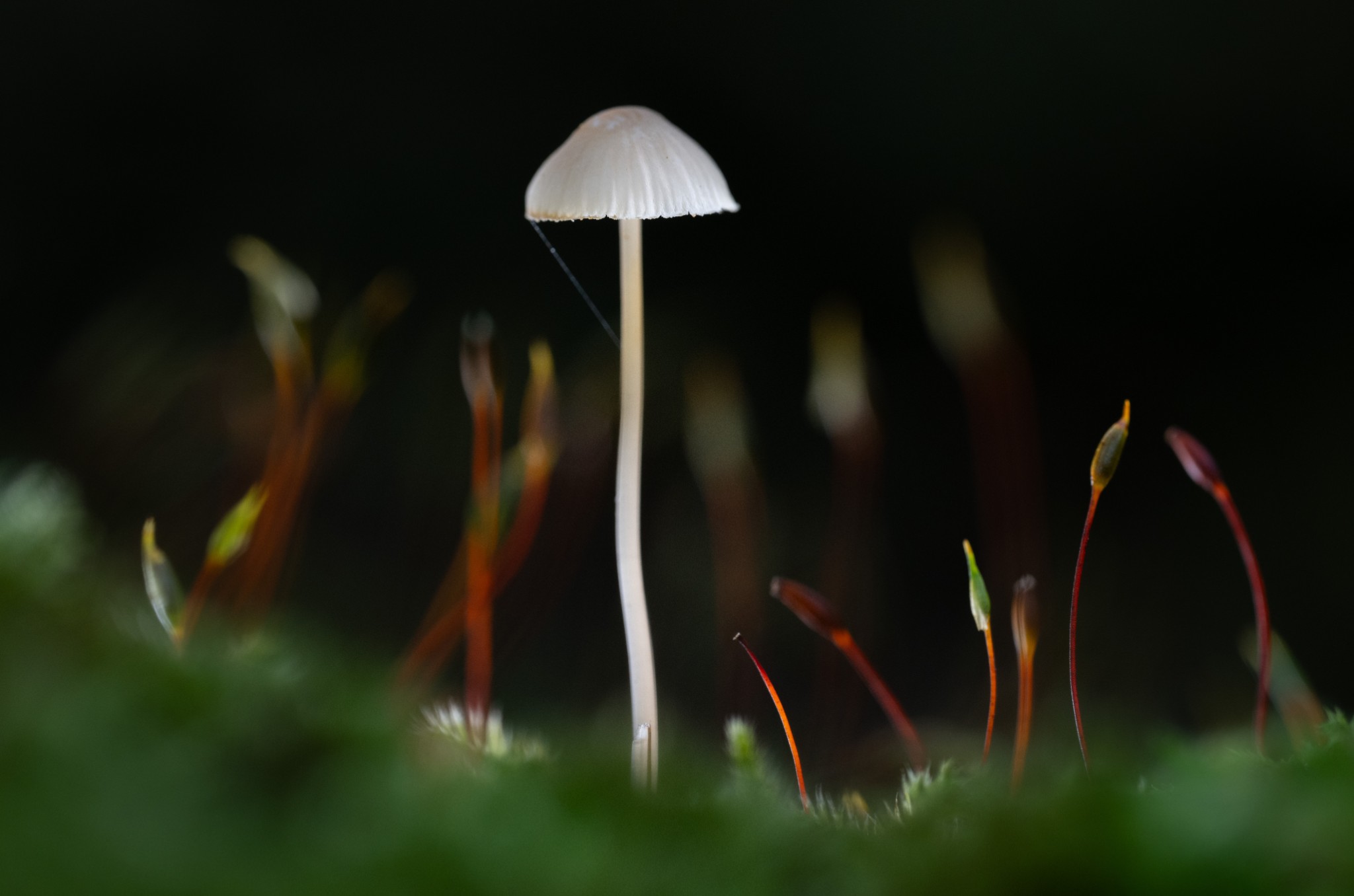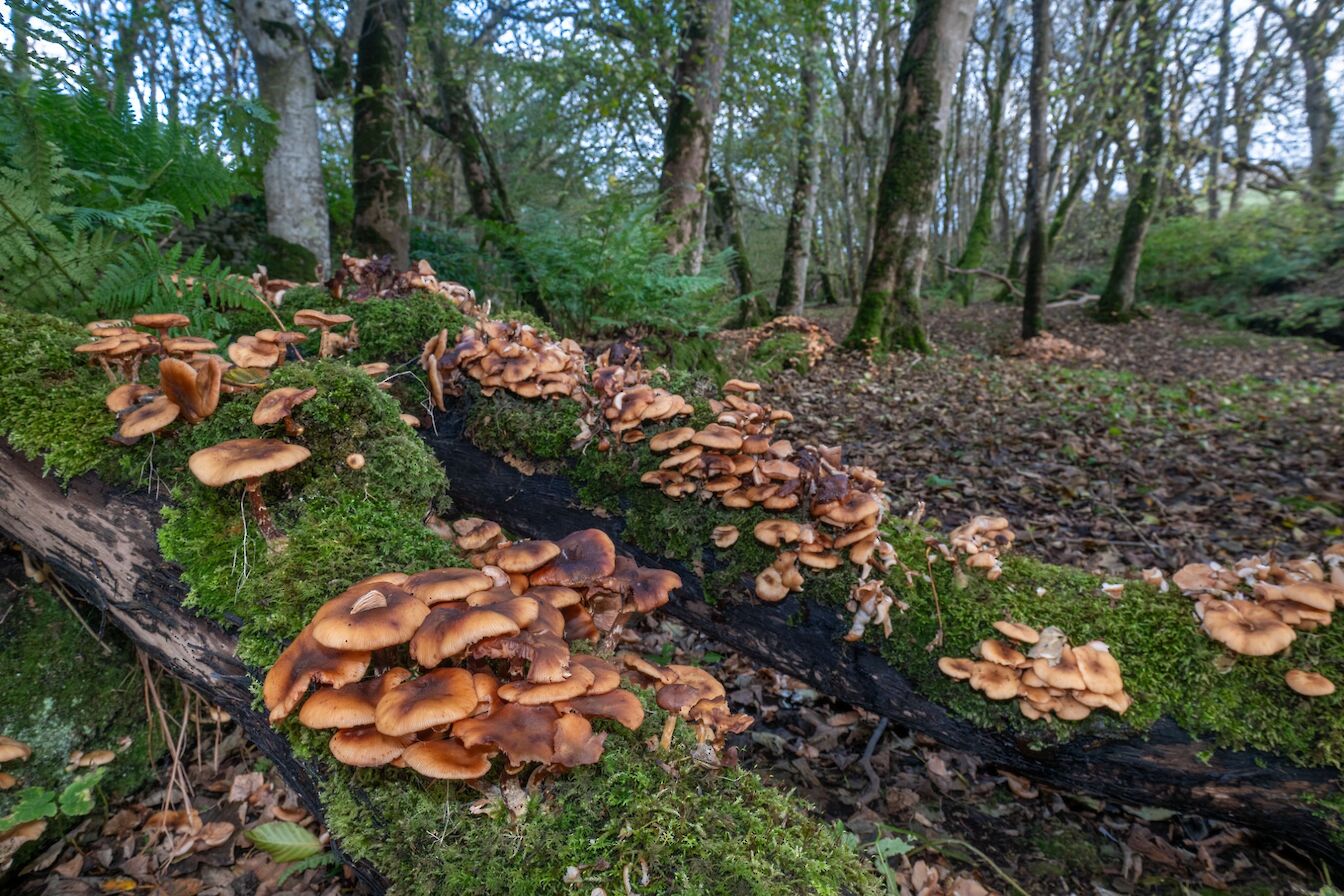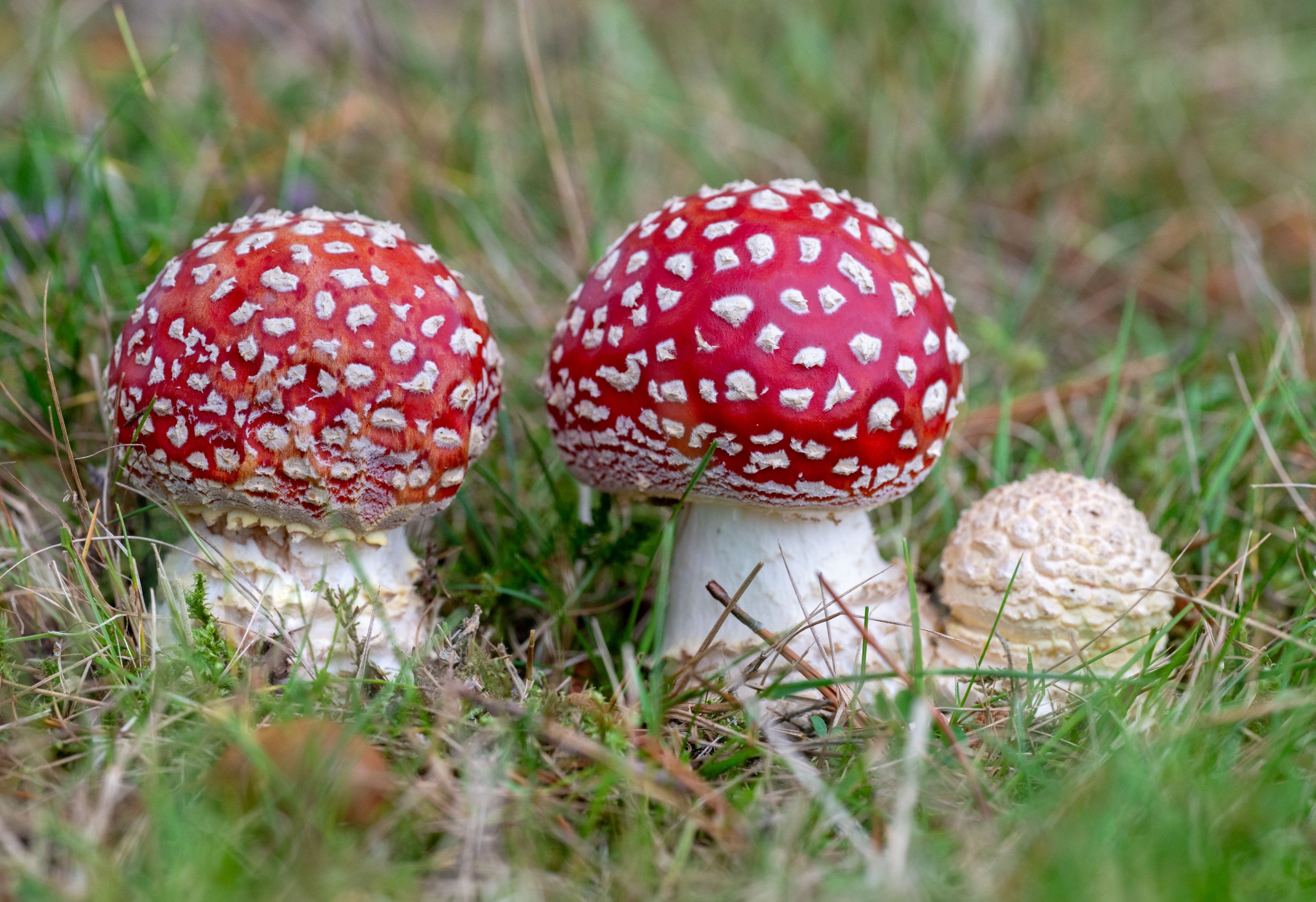I’m very new when it comes to the world of fungi, certainly in terms of trying to correctly identify the many different species.
These last few years I’ve tried a little harder to look past my initial thought on seeing a mushroom, usually ‘oh, isn’t that pretty?’. Fortunately, Orkney is a great place to discover them but my learning process is going to be firmly in the long-term category.
Fungi are special enough to command their own ‘kingdom’ in terms of classification, the others being bacteria, protozoa, plants, and of course, animals. What we delight in seeing is the fruiting body of the fungi mainly during the autumn, often a short lived ‘display’, whereas the main body of the fungi is present all year round and found underground. Hidden from view are a myriad of thin threads known as hyphae which are spread out in its preferred substrate, be it leaf litter or rotting wood. The collective name for these mostly hidden hyphae is mycelium and it is responsible for feeding the fungi.
Most of us know that fungi are often associated with decay and the recycling of nutrients back into the environment. Some however have complex relationships with trees in particular that are positive. The hyphae of some species penetrate the tree’s root cells which serves the vast majority of its energy needs from the photosynthesis carried out in the trees leaves. This isn’t a one-way relationship however; the tree gains vital nutrients such as phosphorous and nitrogen via the fungi action in the soil.
So, where to start? There is a lot to consider! Besides the very distinctive and unique species, we generally need to do some investigative work as once visible they can change markedly as they decay.
Colour, shape, and texture are all important. Does it look slimy (the degree of viscosity) or waxy? Some have scaly stipes, some stipes have a ring, others are completely smooth. The degree of variation in fungi not only make them challenging to identify with some degree of confidence but that’s also part of the fascination. Examination of the gills underneath the cap is often important and a small mirror can be a handy addition to your backpack when out.
For experienced mycologists, the process of identifying fungi involves these initial observations followed by detailed microscopic examination of the fruiting body and its spores. The latter is beyond the scope of my skills but some careful observations and a good field guide can go a long way to helping us.
But of course, I want to photograph them and this has its own set of challenges. They can often be in an awkward place, they are sometimes very small, low to the ground, have reflective surfaces and most are very much in the realm of macro photography which requires a range of specialist techniques.
I mostly use a 105mm Nikkor lens which allows me to stay further away from the subject than shorter focal lengths, but even then, if the fungi are tiny, it will require the lens to be very close to the subject depending on how large you want to be in the frame. I recently spent a few days trying out some techniques with an additional video light as well a large macro diffuser using flash to fill in the shadows.
Two places that are worth exploring in Orkney are cemeteries and woodland, each a distinct habitat that meet the needs of a wide range of fungi. Fungi are of course at the mercy of mowing to keep the cemeteries neat and tidy but on this day, I hit the jackpot with a fantastic range of mostly waxcap species.
I settle on Spangled waxcap for the bright red species (having initially thought it was scarlet waxcap) with its characteristic dark red striations on its cap. Nearby I found a diminutive set of fresh golden waxcap, impossibly yellow with slimy caps. One of my favourite waxcaps is here too, the bright green parrot waxcap, Gliophorus psittacinus, the Greek for parrot being ‘psittakos’. It can be very variable and becomes less green with age, often turning yellow or even lilac. I find the most impressive example of smoky spindles I’ve ever seen too, its characteristic smooth waxy texture arranged in a dense clump.
A very odd-looking textured blob is in the grass, one which I’ve recently found in my garden and isn’t actually a fungi at all but rather a slime mould. Creamy in colour and bobbly in texture this is the plasmodium phase of Mucilago. If this piques your interest there are over 200 species of slime mould to study!
Some large examples of field blewit are here too but already having started to decay. I place one on my video light which back-lights the gills beautifully and takes on a soft pink hue.
Woodland shouldn’t be overlooked though and my breath is taken away at the profusion of honey fungus on display in Binscarth wood. Almost every fallen beech tree is covered in not only moss but a carpet of the fungi. There are some on live upright trees too and may ultimately cause their demise. The relationship between honey fungus and beech trees is a less benign one, and there are instances where fungi invade a diseased or damaged tree, hastening its end.
These fungi are large and so I can photograph them with a medium telephoto lens, not so the translucent and tiny bonnet mushroom I find nearby. Here I use a side light to illuminate the delicate mushroom making it stand out from the dark woodland behind.
On a recent trip to Hoy, I found a rather special fungi next to an old and decaying experimental plantation; fly agaric with its classic red cap with white textured ‘spots’ and the purple brittlegill. As its name suggest the gills are indeed brittle, this widespread fungi can be associated with coniferous woodland (as in this case) as well as deciduous forest.
A fascinating family of which I’ve only just scratched the surface. Be sure to make the most of them before winter arrives.
Raymond is a wildlife filmmaker who also offers bespoke Orkney wildlife tours and one-to-one wildlife photography tuition. Find out more via his official website. You can also find him on Facebook, Twitter and Instagram.






